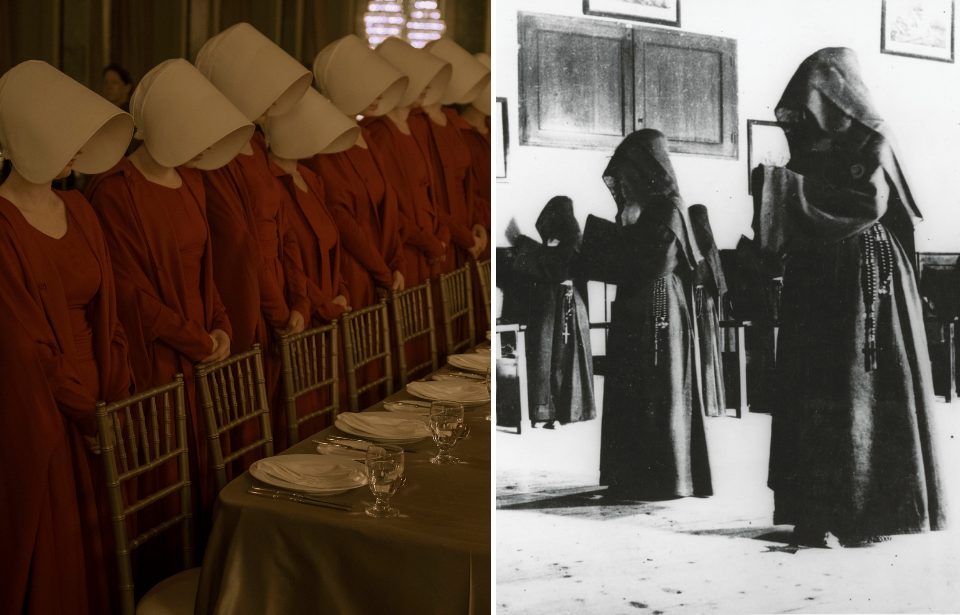In the first episode of The Handmaid’s Tale, a group of young women are told, “this will become ordinary.” The Handmaid’s Tale is a dystopian television series based on Margaret Atwood’s 1984 novel that follows fertile women, known as Handmaids, who are forced to bear children.
The most terrifying part of this dystopian world is that it is all based on real-life events. As Margaret Atwood said herself, “One of my rules was that I would not put any events into the book that had not already happened… nor any technology not already available. No imaginary gizmos, no imaginary laws, no imaginary atrocities. God is in the details, they say. So is the Devil.”
Here, we take a look at all the historical events The Handmaid’s Tale is based on, in the hope we can learn from our past mistakes to ensure the plot of the novel and show doesn’t become a reality.
1. The persecution of women in Gilead is partially inspired by the Salem witch trials
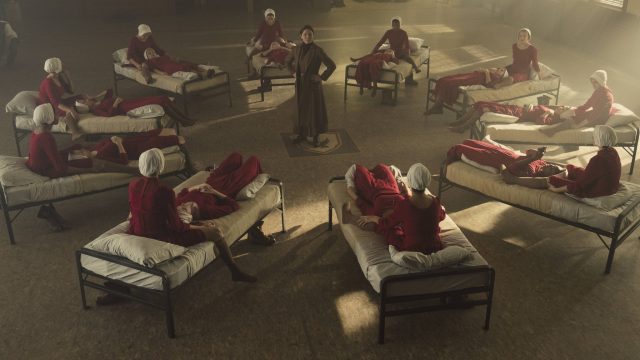
In 2017, Atwood gave an interview to PRI’s The World and said that The Handmaid’s Tale borrows heavily from the story of Mary Webster. Before the Salem witch trials, Webster was the most infamous “witch” from Hadley, Massachusetts.
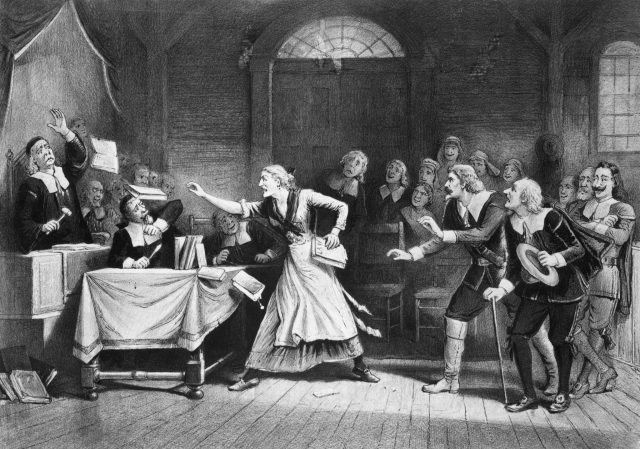
Margaret Atwood has stated that The Handmaid’s Tale is dedicated to Mary Webster because “she is an example of a female person wrongly accused, but she is slightly a symbol of hope because they didn’t actually manage to kill her. She made it through.”
2. Giving birth in public used to be royal protocol
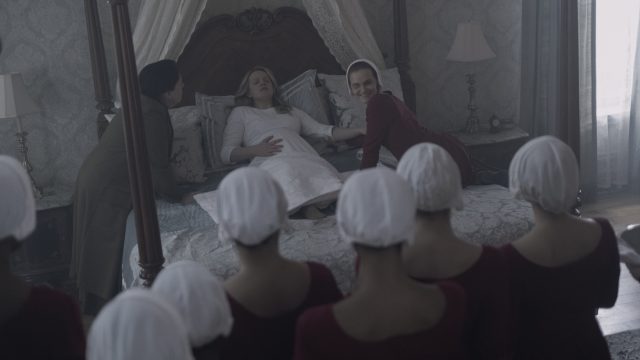
In The Handmaid’s Tale, Handmaids are forced to give birth in front of dozens of other women, including their fellow Handmaids and “Aunts” on the show, making birth a very public affair.
Royal births in Europe throughout the 1600s and 1700s followed a similar custom. Royal women giving birth often did so in front of an audience for several reasons. Witnesses were needed to assure that babies were not switched at birth, especially during the birth of an heir to the crown.
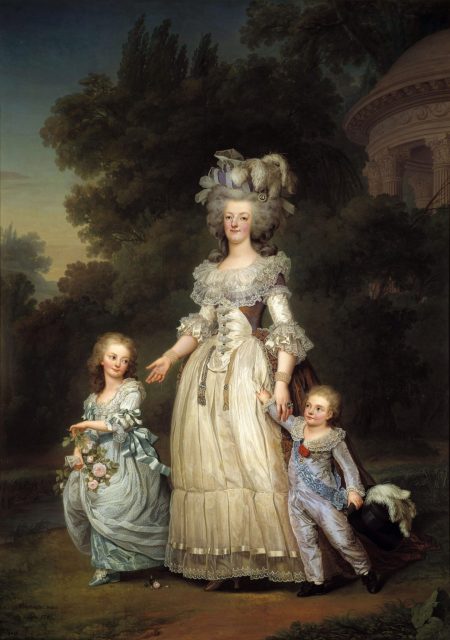
3. American history inspired the rise of the Christian right in The Handmaid’s Tale

4. Decree 770
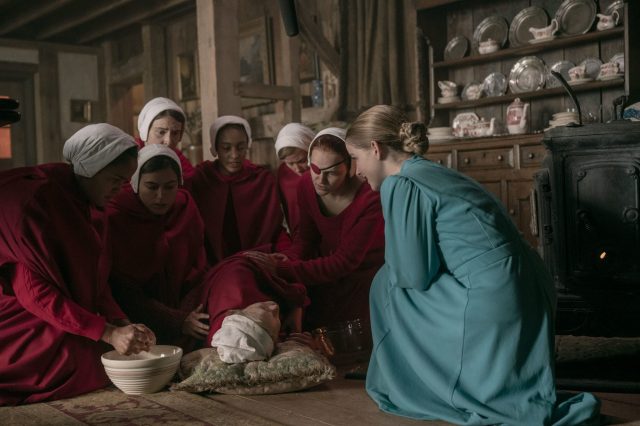
During the 1950s, Romanian women began entering the workforce and having fewer children. By the 1960s, the availability of contraceptives was extremely limited, so abortion became the main method of Romanian family planning. However, the Communist Party in power wanted to see a drastic increase in the Romanian population so they outlawed birth control and abortion.
Under the Romanian Communist regime and Decree 770, women were forced to visit the gynecologist once a month to check for pregnancy while police officers stood guard in the hallway to ensure women complied. Wealthy women continued to buy condoms and birth control on the black market, but lower-class women did not have the same luxury. In cases where women detected pregnancies before their doctor did, they often tried to give themselves at-home abortions, resulting in many unintentional deaths. The policy remained intact until the fall of the Soviet Union in the 1980s.
5. The history behind the Handmaids’ outfits

6. The Handmaids of New Jersey
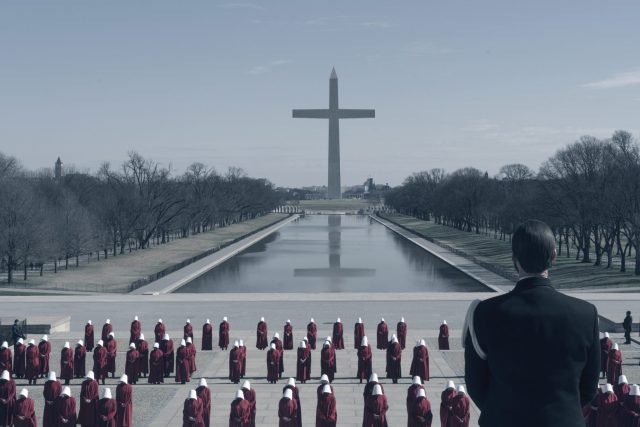
In 1975, a New York stockbroker named Robert Gallic and an ordained Catholic priest named Rev. James Ferry started a group known as People of Hope. The wives in this group were known as “The Handmaidens of God,” but unlike Atwood’s Handmaidens who were forced to have children, these wives closely resembled the Wives of Gilead. It was up to these “Handmaidens of God” to set a good example to other women, as well as police one another to make sure they were following their designated “rules” – such as being subservient to their husbands.
People became concerned with the group, stating that the People of Hope “subordinates its women, discourages social contact with non-members, arranges marriages, and moves teenage disciples to ‘households’ for indoctrination.” However, even today, the People of Hope maintains an active presence in central Jersey.
7. Prisoners in the Soviet Union also had to clean up radiation
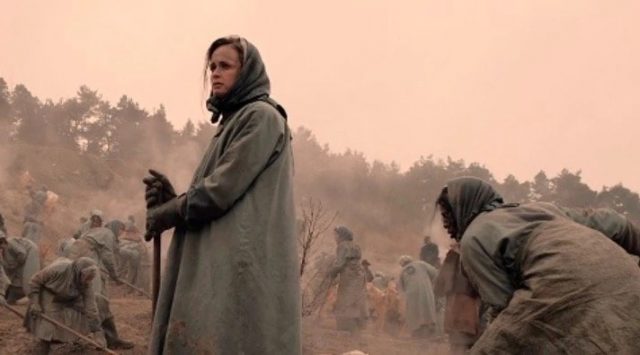
8. “The Indian Adoption Project”

